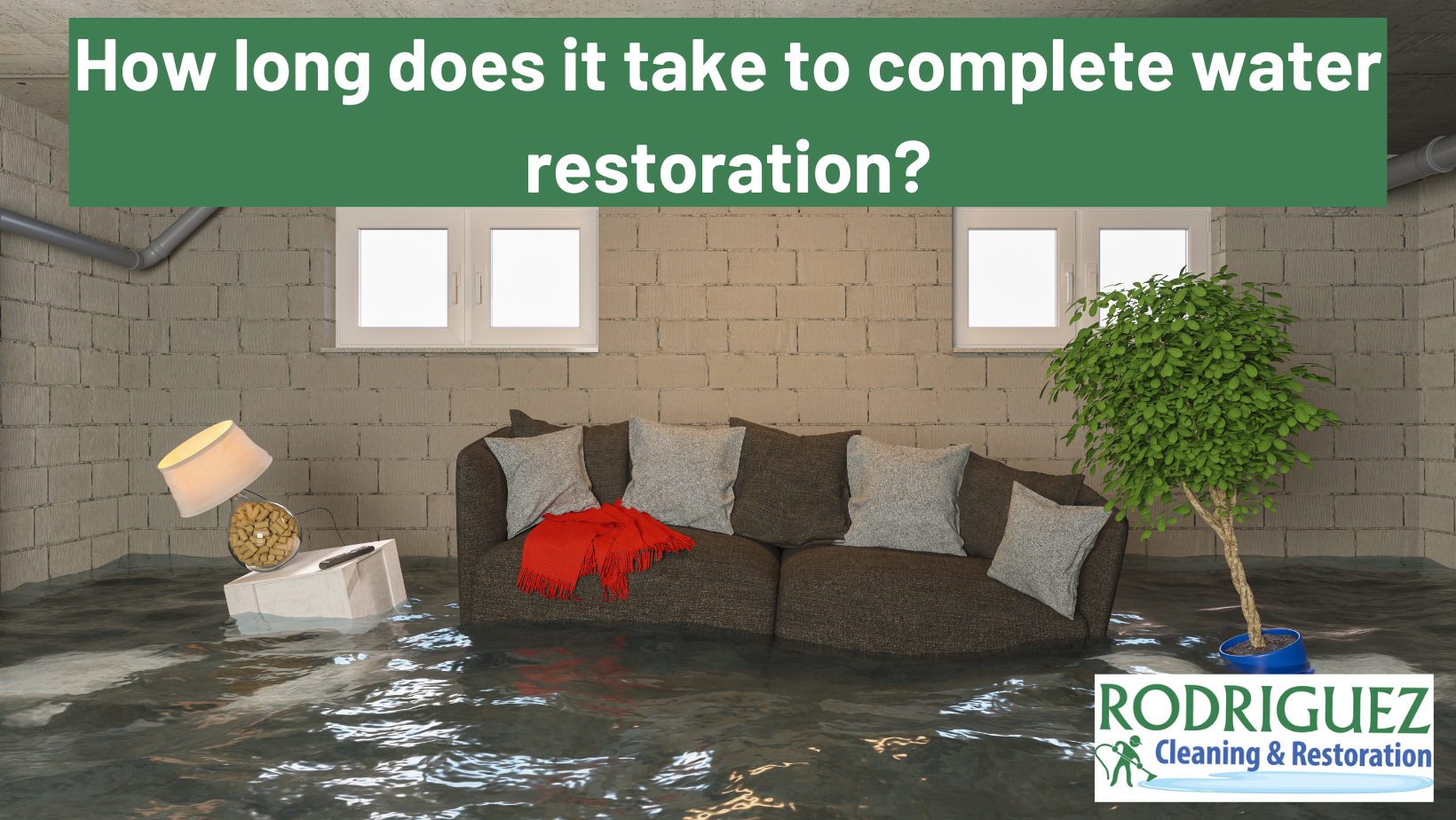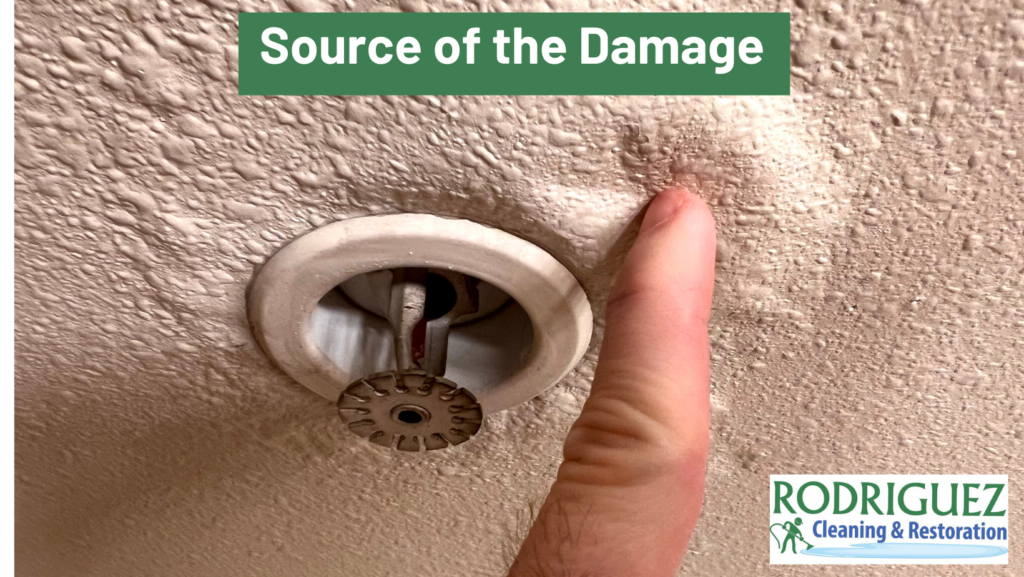A water restoration project is the process by which a home or place of business is returned to pre-loss condition following a plumbing, sewage, flooding, or fire incident. It can take anywhere from a few hours to a few months, depending on several factors, including:
1. Type of Water Damage
There are three main types of water damage: clean, gray, and black. Clean water damage is the least severe type and can typically be restored within a few days.
Gray damage, on the other hand, contains some contaminants and may require additional cleanup and sanitation, which can extend the project by a few weeks.
Black water is the most severe, containing dangerous contaminants like sewage and bacteria, which can take several months to clean up and restore.
Proper identification and handling of these damage types can minimize project duration.
2. Source of the Damage
A burst pipe or a leaking appliance may cause localized damage that can be repaired within a few days, while
floodwater or sewage backup may require extensive cleanup and restoration that can take several weeks or even months.
It’s always important to have the source of the damage fixed before starting the restoration process to ensure a more efficient and successful outcome.
3. Size of the Affected Area
A small area, such as a single room, can typically be restored within a few days.
However, a larger area, like an entire floor or multiple rooms, will require more resources to restore and may take several weeks or months.
The damage’s extent and contamination level will also affect the duration of the restoration process.
4. Type of building
Buildings with complex designs, such as multiple stories or unique architecture, may require more time and specialized equipment to restore.
Similarly, buildings with multiple units or shared spaces, such as apartments or commercial buildings, may require coordination with multiple parties and a longer restoration timeline.
Additionally, older buildings may have outdated plumbing or electrical systems that can complicate the water restoration process and extend the project duration.
5. Weather Conditions
In areas with high humidity or frequent rain, it may take longer for the affected area to dry out, extending the overall project duration.
Similarly, extreme temperatures, such as hot or cold weather, can impact the drying equipment’s effectiveness.
6. The Contractor You Choose
When choosing a water restoration project contractor, choose one with experience, expertise, and reputation.
They should also be licensed and have experience with the specific type of damage and restoration needed.
Besides that, they should provide a detailed project plan and timeline and clear communication throughout the restoration process.
7. The Materials Affected by the Damage
Certain materials, like wood or drywall, may require a more extensive restoration than other materials, like concrete or tile.
This factor can impact the project’s duration, as more time may be required to replace or restore damaged materials.
The availability of replacement materials and the complexity of the restoration process can also affect the project’s timeline. A skilled contractor should be able to assess the extent of the damage and determine the best course of action for each material type.
8. The Insurance Process
If the damage is covered by insurance, the insurance process can impact the project’s duration. This delay is because the insurance company may require specific documentation or approvals before work can begin.
Additionally, the contractor may need to work with the insurance company to ensure the project is completed within the insurance policy guidelines. It takes time and resources to properly file the necessary documents and comply with the insurance company’s requirements.
9. Legal Requirements
There are legal requirements that must be met during a water restoration project. These include obtaining necessary permits and following building codes and regulations. These requirements can vary depending on the type and extent of the damage.
As such, having a legal representative that can guide the contractor throughout all project stages will help ensure that everything is done to the proper legal standards.
Following all these guidelines and requirements can help mitigate the duration of restoration projects.
10. Techniques and Methodologies Applied
Some companies may use traditional methods that are more time-consuming, while others may use modern, more efficient methods.
For instance, a company that uses advanced drying equipment and techniques may be able to complete the project faster than a company that uses traditional drying methods.
Some restoration methods may also require more time for testing and monitoring to ensure that the property is fully restored to pre-loss condition.
11. Health and Safety Requirements
If additional health and safety requirements need to be met during the restoration process, for instance, asbestos removal and mold remediation, the project’s timeline will be extended.
These requirements may involve additional inspections, testing, specialized equipment, and training, which can add time to the restoration process. Ensuring the health and safety of all workers and occupants of the property is crucial, however, and should not be compromised for a shorter timeline.
12. Coordination with Other Contractors
To properly restore a property, you will need to coordinate with different contractors and specialists, such as plumbers and electricians.
Interactions among these different parties may affect the timeline of the project. For instance, if there are delays in completing the electrician’s work and the water damage needs the power to be repaired, this may extend the overall restoration process.
13. Level of Customization Required
If the property owner wants to customize their space during restoration, it can add to the project’s timeline. Customization requires additional planning and coordination and acquiring the necessary materials and equipment. It can also add to the project’s cost, as custom work may require specialized expertise and more time to complete. However, customization results in a more personalized and functional space, so weighing the benefits and drawbacks before deciding on it is essential.
14. Geographic Location
In remote areas, the availability of resources and materials can be limited, which can prolong the project timeline. Besides that, the distance from major cities can make finding contractors with the necessary equipment and knowledge more difficult.
Additionally, the time it takes to ship materials and equipment to the restoration site can affect the project timeline.
That is why choosing contractors near the site is essential.
15. Current Market Conditions
During certain seasons, more water-related damage occurs than others; for example, floods and burst pipes are more common in winter. During these times, there may be a higher demand for restoration services, which can extend the project timeline.
It would help if you went for a company that can handle a high volume of work effectively and efficiently.
On the other hand, there may be less demand during low-activity seasons like summer, so finding contractors with available resources may be easier.
16. Property Use During Restoration
Additional planning and coordination may be required to balance the restoration work with daily business operations.
During restoration, work may be limited to after-hours and weekends to allow customers to use the property during regular business hours.
It would help if you went for a company with enough employees to handle this aspect of the project.
Bottom-line
There are numerous reasons why a property’s restoration project can be delayed. However, dealing with an excellent restoration company can ensure the project is completed promptly and satisfactorily. Contact us today to find the right contractor to make your water restoration process efficient and operational.





